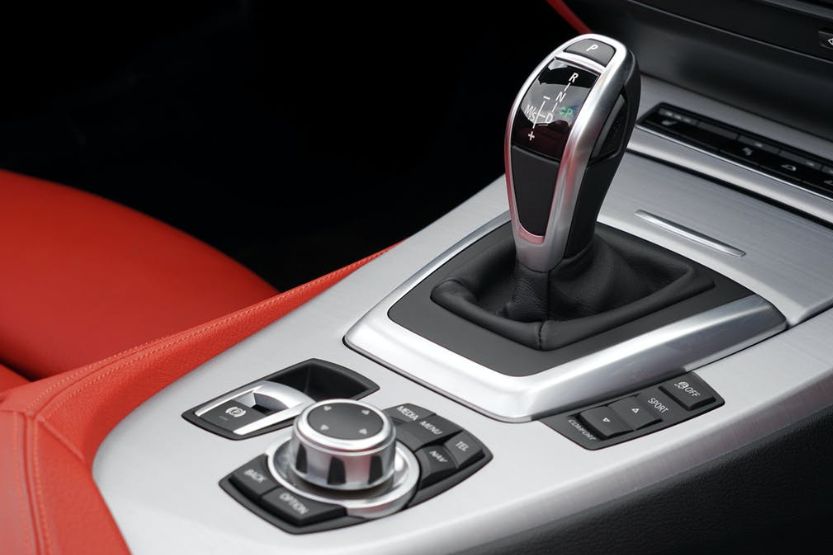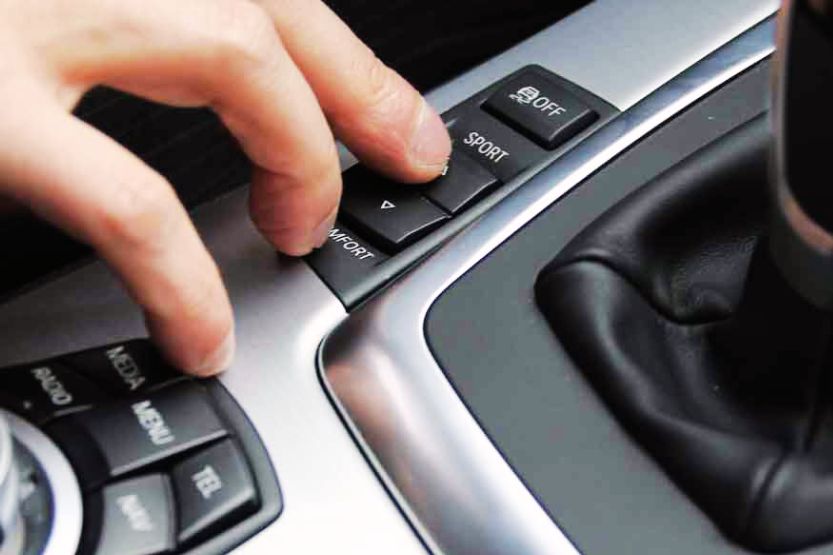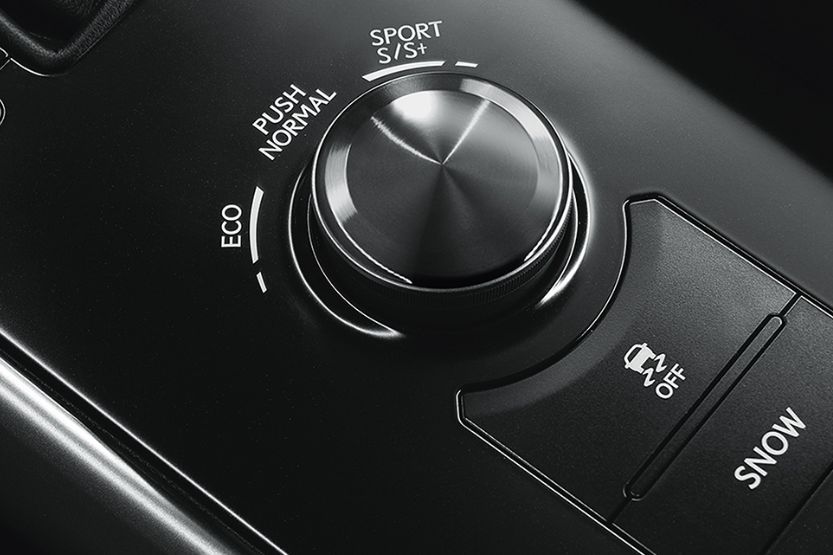Automatic transmission cars use letters instead of numbers with varied meanings on the gear selector. If you are used to manual gears, these letters can be confusing at first. So, what does the S stand for on a gear shift?
The letter “S” stands for “sport.” The “S” setting is ideal for driving on curvy country roads where you want to keep the RPMs high as you wind through tough roads. As you come out of the corners in “S,” your car transmission maintains lower ratios longer for more power. This allows for a more dynamic gear shift and driving experience.
Read on to learn more about the meaning of the letter S on a gear shift and what to consider when using the S-gear. Let’s dive in!
What Does the S Mean on a Gear Shift?

“S” Stands for Sport
The “S” stands for sport, as we already established, and it is great for driving on winding country roads where you want to keep the RPMs as high as possible. This enables a more dynamic gear shift and a more enjoyable driving experience.
Technological advancements have had a big impact on the car industry. Automatic cars are becoming more popular since they are simpler to drive than manual transmission vehicles.
Early cars with manual transmissions had two forward gears and one reverse gear controlled by a system of pedals.
Now, the advent of a gearbox, known as transmission, allowed a car to drive itself.
S Mode Provides a High Number of Rotations per Minute
Carmakers are working hard to increase the number of features available to make cars more user-friendly. The S mode provides a high number of rotations per minute while maintaining the gearbox in a lower gear.
You limit the engine transmission to the lowest gearbox level when setting the gear lever in S mode. This raises the resolution per minute while keeping the transmission at its lowest gearbox setting.
Trim Level Highlights: Toyota LE vs. XLE
Different Types of Transmissions in Cars
1. Automated Manual Transmission (AMT)
First, you have the Automated Manual Transmission (AMT), also known as a Semi-automatic Transmission, which includes both automatic and manual gears.
This certainly saves a lot of fuel and is less expensive.
2. Automatic Transmission (AT)
Automatic Transmission (AT) is another popular choice among current car transmissions.
3. Continuously Variable Transmission (CVT)
The Continuously Variable Transmission (CVT) is also another upgrade worth highlighting. CVT provides optimal gear shifting at various ratios depending on the engine speed.
4. Dual-clutch Transmission (DCT)
There is furthermore DCT which stands for the dual-clutch transmission. It combines manual and automatic gearbox systems. It is made up of two distinct shafts.
The first has odd-numbered gears, while the second has even-numbered ones. Unlike a standard automatic transmission, it does not have a torque converter.
Gated Shifter: Description, Benefits, What to Know
Things to Keep in Mind When Driving Using S Mode
Now that you know what the S gear is, you can try it out yourself. Pay attention to how the throttle response and automatic gear change at first.
To get you started, here are a few things to keep in mind when using the S mode on your vehicle:
- To avoid sudden accelerations, we recommend using the S mode exclusively on open highways rather than in congested areas or the parking lot or something.
- Start with the D mode first, as this will help you drive as economically as possible.
- To change to S mode, press the gear selector button and lower it to Sport mode. It is the same button you use to change from P to D.
- Another thing to remember is that when you go back to N or D mode, you should not hit the gear selector’s button! After using the S mode, put it back into place. This can help avoid shifting to undesirable modes like R and P, potentially damaging your transmission.
When to Use the S-Gear In an Automatic Car
You can use the S-Gear for more than just manual shifting. Also, the automatic shifting can benefit from this gear by improving the car’s overall transmission.
Different Ways to Use S-Gear
There are two significant ways to use S-Gear if you have an automatic transmission car:
- Combine it with the existing gear shifter layout on the transmission.
- Use S-Gear as a stand-alone shifting option, which can save you money on gas and, of course, extend the lifespan of your gearbox.
Challenges of Using S-gear as a Stand-alone Shifting Option
However, using S-Gear as a stand-alone shifting option comes with slight challenges. You will have to select the gears manually rather than following the transmission’s existing gear-change sequence. This is how you do it:
- Put the vehicle in “Drive” mode.
- Select the desired gear with the shift lever.
- Your car will automatically change up through the gears as you accelerate at this point.
- Return the shift lever to the lower gear to slow down.
- Move the shift lever back to third gear if you’re in fourth gear and need to slow down quickly.
Additional Tips When Using S-Gear
It is essential to keep the following in mind when using the S-Gear with an automatic transmission:
- You should only use the S-Gear with the “Drive” mode.
- We recommend that you use the same shifting technique you usually do with a manual transmission, starting in first gear and then shifting up through the gears as you accelerate.
- Instead of downshifting through S-Gear, use the brakes to slow down immediately.
What Are the Pros and Cons of Driving in S Mode?

Pros
1. Increased Torque and Horsepower
Sport Mode usually, but not always, includes an increase in available torque and horsepower. Of course, this usually translates to higher fuel consumption, which is one of the reasons why you should turn off Sport Mode when not in use.
With the S Mode, you get free power at the press of a button. How cool is that?
2. Increased Acceleration
We have already mentioned that Sport Mode can boost power and torque, and the more torque your vehicle’s engine produces, the faster it can accelerate.
If you press the gas pedal while sitting in a car that is not moving, the car will start to accelerate. However, if your car is in Sport Mode, it will accelerate even faster, allowing it to speed up off the line faster than a car without the S Mode.
3. Stiffer Suspension
Usually, a car’s suspension is the one thing that gives your car that smooth ride. You can find adjustable suspension on several cars and SUVs, allowing for some change in ride height and ground clearance.
Once you select the Sport Mode, the suspension becomes firmer and sometimes lower. This reduces body roll and lowers the center of gravity, allowing your car to maneuver through corners faster. This will, of course, come at the expense of losing some comfort.
4. Tighter Steering
We have already mentioned how the suspension adjusts in S Mode to improve your car’s handling. That, however, would be worthless and potentially dangerous unless you get the steering improved too.
Sport Mode tightens the steering and gives you a better insight into what the wheels are doing. This is especially useful when speeding down a winding mountain route or going all out on a racetrack. Sport Mode will make your car feel like a real driver’s car.
5. Improved Throttle Response
When you enter the S Mode, not only does the steering become more responsive, but the feel of the throttle also changes – sometimes significantly. A small push on the throttle pedal will produce instant results.
You will find increased throttle responsiveness particularly useful on the highway and when overtaking on a two-lane road. Thanks to this, you will be zipping up and past anyone much faster.
6. Shifting At Higher RPMs
Many people would like to buy a vehicle with a manual transmission, and when you ask them why, they usually want to have complete control over when the gear changes, which makes sense.
Most automatic vehicles and trucks shift at a lower RPM, reducing the vehicle’s overall performance. Sport Mode compensates for this by altering the automatic transmission’s default settings and shifting at a substantially higher RPM.
This means you will get the best performance for your car, and you will be able to accelerate farther and faster before the car shifts gears.
Again, what does the S mean on a gear shift? S on a gear shift means Sport. Keep the RPM up as you drive through zigzagging country roads by choosing the S position. In this position, the lower gear is held for more power.
Cons
1. Fuel Consumption
Ok, this one is obvious, but a quick shift in acceleration, response time, torque, and horsepower has consequences. The major disadvantage of using Sport Mode or leaving your car in this mode all the time is that your MPG will fall.
To keep up with the increasing power demands, you will need more gasoline here, and while the difference may not seem substantial at first, it will add up over time.
This is why many car manufacturers have included a Sports Mode button that you can toggle on and off.
You can get the maximum performance from your vehicle without spending extra money at the pump by allowing you to turn Sports Mode on and off at will. Sport Mode can eventually reduce fuel consumption, but it is primarily a balancing act.
2. Engine Life
Modern engines are made to endure a lot of heavy use, especially in sportier cars, but we should also add that switching to Sports Mode puts your engine under more stress.
This should be taken with a grain of salt, as most automakers know their consumers’ desire to use Sports Mode as often as possible.
Of course, this is not something that matters in the short term, but using Sport Mode for an extended period can wear down your engine faster than if you do not use it. It is something to keep in mind.
What Happens If I Drive on S Mode?

Can Change How the Vehicle’s AWD System Behaves
Sport Mode can also change how the vehicle’s AWD system behaves. During severe driving, more power will be given to the rear wheels more quickly, resulting in more precise handling while allowing you to push the car around turns with the throttle during spirited driving.
To improve your car’s handling, you can change the torque distribution between the front and rear wheels and between the left and right wheels.
More Aggressive Engine Sound
You may notice a more aggressive engine sound while driving in the S Mode. Some cars use simulated engine sound pushed through the speakers to enhance the aural impression of full-throttle acceleration. You can amplify this feature when using the S Mode.
Other cars may use mechanical flaps or ducts in the air intake or exhaust systems that open and close to provide a more muscular and frightening sound when the S Mode is active.
Pre-spool Turbocharger
We are seeing more cars now that can even pre-spool their turbocharger at idle when the S Mode is active.
Activate Electronic Adjustments in the Engine Management System
The use of higher-performing driving modes in cars such as the Mercedes E53 AMG or the Porsche 911 does activate electronic adjustments in the engine management system that allow the compressor to generate a positive boost even when the engine is idling.
This prevents boost lag, which generally happens when applying the throttle.
Lexus and Audi Allows Users to Change the Instrument Clusters’ Style, Color, and Motion
Other car models, like Lexus and Audi, can even change their instrument clusters’ style, color, and motion when the S Mode is on.
Some Models Give You Option to Tighten the Driver’s Power Seat Bolstering
Some models also have the option to ‘tighten’ the driver’s power seat bolstering, lower the vehicle’s height-adjustable suspension if provided, and even lower stability control intervention levels to prepare the vehicle for a more dynamic driving experience.
Specialist Sport+ Settings
Other models even have specialist Sport+ settings, which further boost performance with system calibrations not designed for usage on public roads.
FAQs
What Are the Differences Between S and Eco Modes?
The most fuel-efficient driving mode is undoubtedly the Eco Mode. It helps you get the most out of your car by minimizing fuel consumption to the lowest level possible.
S Mode is just the exact opposite when talking about performance and drivability. It is also more fun since it directs the battery’s power to the engine, resulting in smoother, sportier shifting.
How Can I Get the Most Out of S Mode?
Your car must be adequately equipped to function well in Sport Mode, including your tires. Driving in S Mode on worn or wrong tires will be like running a marathon using flip-flops. It just does not work.
Tires designed for the ultimate performance are specially engineered with a tread pattern, shoulder stiffness, grip, and other features that provide the handling, traction, and responsiveness needed to get the most out of Sport Mode.
These tires include such as Bridgestone Potenza and Firestone Firehawk tires.
Can You Leave Your Car in S Mode?
Yes, you can drive in S Mode all day, but you must make some compromises here.
Two consequences are reduced fuel efficiency and the likelihood of greater wear and tear on your engine, transmission, and suspension. Moreover, leaving your car in S Mode may reduce its lifespan.
Generally speaking, using the S Mode is not meant for daily use. It is best used when you are dealing with specific driving conditions that are tough such as curvy country roads where you want to keep the RPMs as high as possible.
How Does the Gear Selector in a Car Work?
The gear selector is a component of a car’s transmission that selects the appropriate gear ratio for certain driving conditions. You usually find it on the shifter knob, with a separate button or gear lever, or it can also be built into the shifter itself.
It usually works because you must first determine the present driving conditions.
Many factors can influence what gear ratio you should use, such as speed, engine RPM, and load.
Most modern cars have an electronic gear selector that automatically chooses the appropriate gear. You can still, of course, find some older vehicles that have a manual gear selector.
Conclusion – What Does the S Mean on a Gear Shift?
We hope you have a better insight into what the letter S stands for, “Sport.” You will find driving in Sport Mode particularly useful on twisty rural roads where you want to keep the RPMs as high as possible. It will provide you with a more dynamic gear shift and driving experience.
Your car’s transmission will hold lower ratios for a longer period to provide more power.
Driving in S Mode will also increase your car’s responsiveness and sensitivity to input. It causes your car to make electronic adjustments that make the engine more powerful and aggressive!
Read next:
SE Meaning for Different Car Brands



![DRL Warning Light [What Does It Mean, Causes, and How to Fix] what does the drl warning light mean](https://roadsumo.com/wp-content/uploads/2022/04/what-does-the-drl-warning-light-mean-150x150.jpg)





